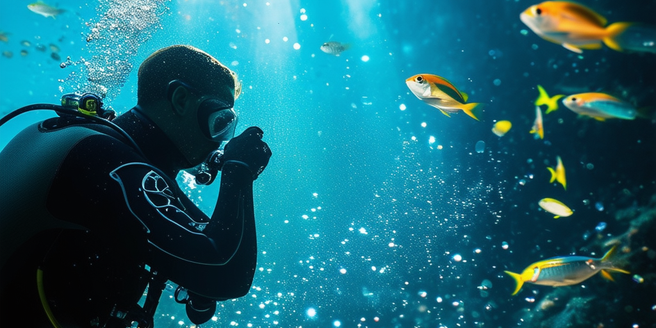
Understanding Air Pressure: A Crucial Factor in Diving
Air pressure significantly impacts diving by influencing buoyancy and respiratory functions. Divers need to grasp how increasing water depth causes higher pressure, compressing the air in their tanks more forcefully. With each descent, the physical properties of gases interact more intricately with the human body. This compression affects air consumption rates and requires divers to monitor their gauges closely. Proper training and experience help divers manage these conditions effectively. The pressure difference between the surface and depth can also cause barotrauma, making it critical for divers to equalize their body cavities regularly. Understanding these dynamics allows divers to anticipate potential challenges and plan dives accordingly. Therefore, comprehensive knowledge of air pressure is indispensable for safety and efficiency underwater.
How Changes in Air Pressure Affect Dive Depth
Fluctuations in air pressure directly influence dive depth capabilities. Higher pressure requires divers to adjust their buoyancy controls meticulously to avoid unintended descents or ascents. As divers submerge, the increased pressure compresses air pockets within their gear and body, requiring conscious adjustments to maintain neutral buoyancy. This is why comprehensive knowledge of pressure dynamics is fundamental for every diver. It is crucial for divers to continuously monitor their instruments to ensure safety and precision. Moreover, sudden changes in atmospheric conditions can alter initial dive plans, as unforeseen pressure increases may challenge a diver’s ability to stabilize at a desired depth. Proper training on pressure management is essential, allowing divers to anticipate and mitigate risks associated with pressure fluctuations.
Safety Precautions for Varying Air Pressure Levels
Divers must implement strategic safety measures to handle varying air pressure levels effectively. It is essential for divers to continually update their knowledge about the latest safety protocols and equipment advancements. Pre-dive checks ensuring equipment integrity become crucial as damaged gear can exacerbate pressure-related complications. Staying informed about advancements in diving technology can greatly enhance safety and efficiency. Additionally, divers are advised to meticulously plan each dive, factoring in tidal shifts and weather forecasts that could affect atmospheric pressure. Regularly practicing controlled breathing techniques assists in coping with unexpected pressure changes, minimizing anxiety, and maintaining composure. Adhering to diving tables and dive computer guidelines for decompression stops further averts the dangers posed by fluctuating pressures, safeguarding against decompression sickness.
Equipment Adjustments for Optimal Pressure Conditions
Adjusting diving equipment to optimized pressure conditions is vital for a safe underwater experience. Divers should ensure their buoyancy compensators are appropriately fitted and functioning well to tackle pressure-induced buoyancy changes. Regularly checking and adjusting the weights carried helps in maintaining control over ascent and descent rates. Moreover, divers should be acquainted with emergency procedures to handle unexpected equipment failures. Additionally, ensuring your diving suits and masks are correctly sealed minimizes water seepage, preventing discomfort and the risk of barotrauma. Paying close attention to even the smallest equipment details can make a substantial difference underwater. Fine-tuning regulator settings to adapt to varying pressures ensures balanced breathing effort, reducing air consumption. Proper equipment adjustments significantly enhance diving efficiency and comfort.
Real-Life Examples of Air Pressure Impact on Dives
Real-life diving incidents often underscore the critical influence of air pressure on underwater experiences. For instance, divers in high-altitude lakes encounter reduced atmospheric pressure compared to sea level, necessitating distinct decompression strategies. Awareness of these differences is crucial for safe diving practices. Furthermore, understanding the physics of gas laws plays a pivotal role in managing buoyancy and ascent rates effectively. Similarly, those diving in regions with dynamic weather patterns often report sudden pressure changes leading to rapid, unexpected ascents. These cases highlight the essential role of comprehensive dive planning that accommodates potential pressure shifts. By reviewing and learning from such instances, divers gain valuable insights, refining their skills to better handle pressure variability, thereby enhancing overall diving safety and enjoyment.
